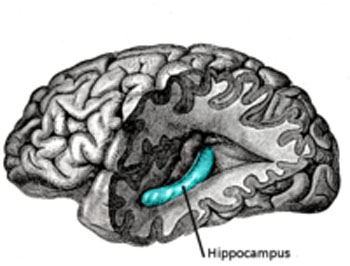Aged Patients Should Benefit from Neuronal Stem Cell Therapy
By LabMedica International staff writers
Posted on 28 Jun 2016
Neurodegenerative researchers have demonstrated the potential of stem cell therapy for treating elderly individuals with age-related neurological illnesses.Posted on 28 Jun 2016
Investigators at the Texas A&M Health Science Center (Temple, Texas, USA) used donor cells from the sub-ventricular zone of the brain to prepare neural stem cells. These stem cells were grafted into the hippocampus of both young and old (the equivalent of about 70 years old in human terms) rats.

Image: The hippocampus, located in the medial temporal lobe of the brain (Photo courtesy of Wikimedia Commons).
Results published in the May 18, 2016, online edition of the journal Stem Cells Translational Medicine revealed that advanced age of the host at the time of grafting had no major adverse effects on engraftment, migration, and differentiation of grafted subventricular zone-neural stem cells (SVZ-NSCs) in the intact hippocampus. Both young and aged hippocampi promoted excellent engraftment, migration, and differentiation of SVZ-NSC graft-derived cells.
In addition, SVZ-NSC grafts established neurogenic niches in non-neurogenic regions, generating new neurons for extended periods after grafting. This phenomenon would be beneficial to transplant recipients if these niches could continuously generate new neurons and glia in the grafted hippocampus, as newly generated neurons and glia would be expected to improve, not only the microenvironment, but also the plasticity and function of the aged hippocampus.
“We are very excited to see that the aged hippocampus can accept grafted neural stem cells as superbly as the young hippocampus does and this has implications for treating age-related neurodegenerative disorders,” said senior author Dr. Bharathi Hattiangady, assistant professor of molecular and cellular medicine at the Texas A&M Health Science Center. “It is interesting that even neural stem cell niches can be formed in the aged hippocampus. What was really exciting is that in both old and young brains, a small percentage of the grafted cells retained their "stemness" feature and continuously produced new neurons. They are still producing new neurons at least three months after implantation, and these neurons are capable of migrating to different parts of the brain.”
Related Links:
Texas A&M Health Science Center













